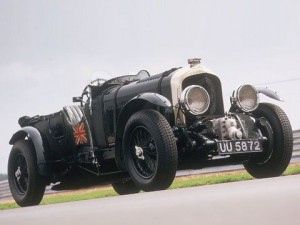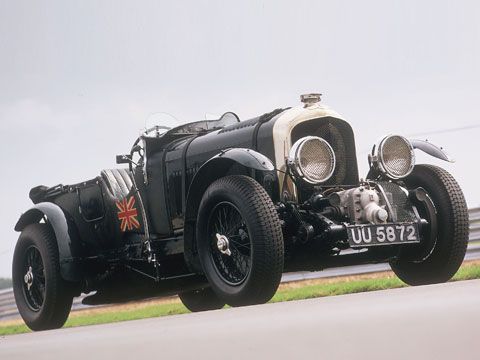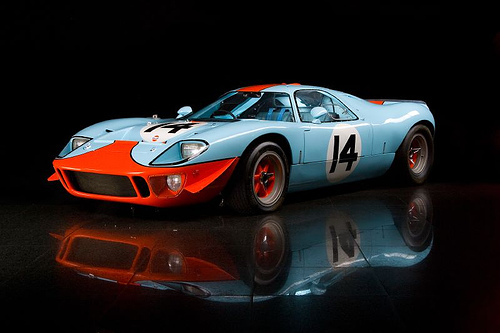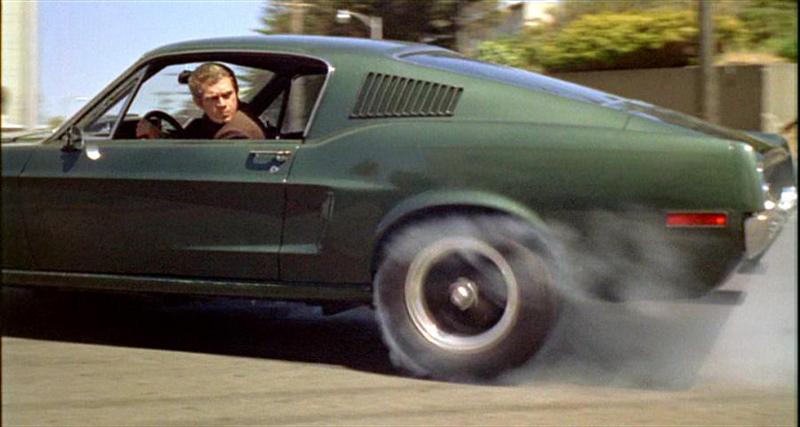This article is one of a series written about cars in the Blackhawk Museum, as part of the Docent training scheme I have completed.
 To many, the Bentley is the quintessential vintage sports car, and no vintage Bentley is as well known as the Blower, so called due to the large, crankshaft driven supercharger, or in the language of the time, blower, used to generate additional horsepower.
To many, the Bentley is the quintessential vintage sports car, and no vintage Bentley is as well known as the Blower, so called due to the large, crankshaft driven supercharger, or in the language of the time, blower, used to generate additional horsepower.
The Bentley legend begins not on land, but in the air. As the horror of World War 1 and the stalemate of trench warfare unfolded in northern France, governments began investing heavily in the development of aircraft, initially purely for reconnaissance purposes. Ever faster, more powerful aircraft capable of flying at higher altitudes, with fewer breakdowns were required. The aero engines designed by Walter Owen (“WO”) Bentley were amongst the best developed in this period. After the armistice, Bentley decided to translate the engineering excellence of his aero engines to road vehicles, and Bentley Motors was born, in Cricklewood, northwest London.
The Bentley name is synonymous with the Le Mans 24 hour race, due to the marque achieving five victories in the first eight years of the race taking place. To this day, British motor-racing enthusiasts flood to Le Mans each year. Le Mans was designed to be as much a test of endurance as of pure speed. Cars taking place were sports cars or touring cars, of a type which could be bought off the showroom floor, not pure-bred racing cars – in the early years of the race, competitors started with their canvas tops up, and then folded them down later in the race. The course was, and largely remains, public roads closed for the event, featuring a three mile straight to test top speed, and a variety of high and low speed corners. The surface was, by modern standards, poor – the distinctive Bentley mesh grille was developed to protect the cars from flying stones. Just how tough the cars were is shown by Bentley’s Le Mans victory in 1927. As the sun set, there was a pile up at the Whitehouse corner. The entire Bentley team was involved. One car was extracted from the wreckage, and despite having its front axle pushed back, it went on to win. Svelteness and lightweight were never Bentley characteristics; Ettore Bugatti famously commented they were “the fastest trucks in Europe.”
As memorable as the cars themselves were the men who raced them – the Bentley Boys. These were gentlemen “of independent means” – they had family money, and no need to work. Their glamorous, “holidaying on a yacht in Cannes” lifestyles captured the imagination of contemporaries; to us, these characters seem to have fallen from the pages of an F Scott Fitzgerald novel. After the excitement of war, they seem to have been attracted to motor-racing by virtue of the speed, danger and sense of sporting achievement. Many of them owned adjoining apartments in Mayfair, the best part of London, and the southeast corner of Grosvenor Square, was known as “Bentley Corner”. They raced not just for themselves, but for King and Country. The Bentley Boys left a profound impression upon British motor sport, by the formation of the British Racing Drivers Club, the body which today owns many of Britain’s motor-racing courses, and organizes the British Grand Prix each year.
By the late twenties a new technology had been developed which threatened to render Bentleys uncompetitive in racing. Supercharging uses a separate mechanism driven by the engine to pressurize the fuel/air mixture, and blow it into the cylinders. Significantly greater engine speeds and power can be obtained, in a noisy and dramatic manner. According to the Mercedes Benz factory museum, it was the roaring of superchargers which coined the phrase “the roaring twenties”. WO Bentley felt this technology would “pervert the design and corrupt the performance” of his cars, and refused to work on this himself. Unwilling to be beaten, especially by Rudolf Caracciola and his Mercedes, Tim Birkin, considered to be the fastest of the Bentley Boys, invested much of his personal fortune in the development of a supercharged Bentley. The project proved to be very challenging and expensive, and the cars, although powerful, were rarely reliable. In his special single seater red Blower, Birkin was able to set a Brooklands lap record at 137mph; this on a egg-shaped banked concrete course with no barrier at the top of the banking, and a point on the track where there was such a large bump that all four wheels left the track…..however, arguably the Blower’s greatest moment came at Le Mans in 1930, when the Bentley team entered a team of normally aspirated Speed Six models, and Birkin with his Blower. It was agreed that Birkin would be the hare, and would go out and set a quick pace, in the hope of luring Caracciola into a duel which would, it was hoped, compromise the reliability of the Mercedes. All went to plan – although at one point Birkin forced his way past Caracciola with his two left hand wheels on the grass at the side of the road, at perhaps 125mph – both Birkin and Caracciola succumbed to mechanical woes, and a Speed Six went on to win.
Into the 1930s, and the depression, like many luxury car makers, Bentley struggled to make ends meet, and was acquired by rival Rolls Royce. For many years, Bentleys were nothing but slightly lower priced Rolls Royces, although some differentiation was introduced in the 1980s with the launch of the turbo-charged Mulsanne model. Today, Bentley is part of the Volkswagen empire. One has to wonder what WO would say – if to supercharge was to “pervert”, how would he feel about his company being owned by Germans, the very people he had striven to defeat, both in the war, and on the track against Mercedes Benz !
Fabulous on-board footage:








I’ve been surfing on-line greater than three hours these days, yet I never found any fascinating article like yours. It is beautiful value sufficient for me. In my opinion, if all web owners and bloggers made just right content material as you did, the internet will probably be much more useful than ever before.
Wow, fantastic weblog layout! How lengthy have you ever been blogging for? you make running a blog look easy. The entire glance of your website is great, as well as the content!